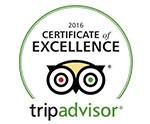 Father and daughter learn to scuba dive in Thailand photo credit to Alex
Father and daughter learn to scuba dive in Thailand photo credit to Alex
Referring to the Open Water Diver course as ‘Doing your PADI’ or being Open Water certified as ‘Having your PADI’ is a commonly-made assumption and not always correct. However we will discuss this later on. Learning to scuba dive has one internationally-recognised level of ‘autonomous Open Water Diver.’ This level is the basic certification that enables the diver to understand the equipment, the basic science of safe diving, and to join ‘Fun Dives’ around the world. There are one or two levels below Open Water Diver, which are for those who just want to experience scuba diving or dive at limited depths. Above Open Water there are countless levels of certification, including for recreational divers as well as professionals. This page discusses the process and requirements of the Open Water Diver course, as well as taking the course at The Similan Islands in Thailand. Those wanting to learn to scuba dive in Thailand can read how long it takes, where is best, and how much it may cost.
How long does the Open Water Course take?
There is no fixed answer to this question, but in general 3-5 days is the most-common length of time required. In that time you can complete all of the theory and practical training and 4 dives in Open Water. To learn to scuba dive in Thailand in general takes four full days and costs $300-600 USD.
How old do I have to be to take the course?
At 15 years old you are regarded as an adult diver, with the same depth limitations. However, children from the age of 12 (or even 10) can take the Junior Open Water Course, which automatically converts to Open Water depth limitations on their 15th birthday. There is no upper age limit for the course, but in general divers over 60 are required to produce medical documentation as evidence of being healthy to dive.
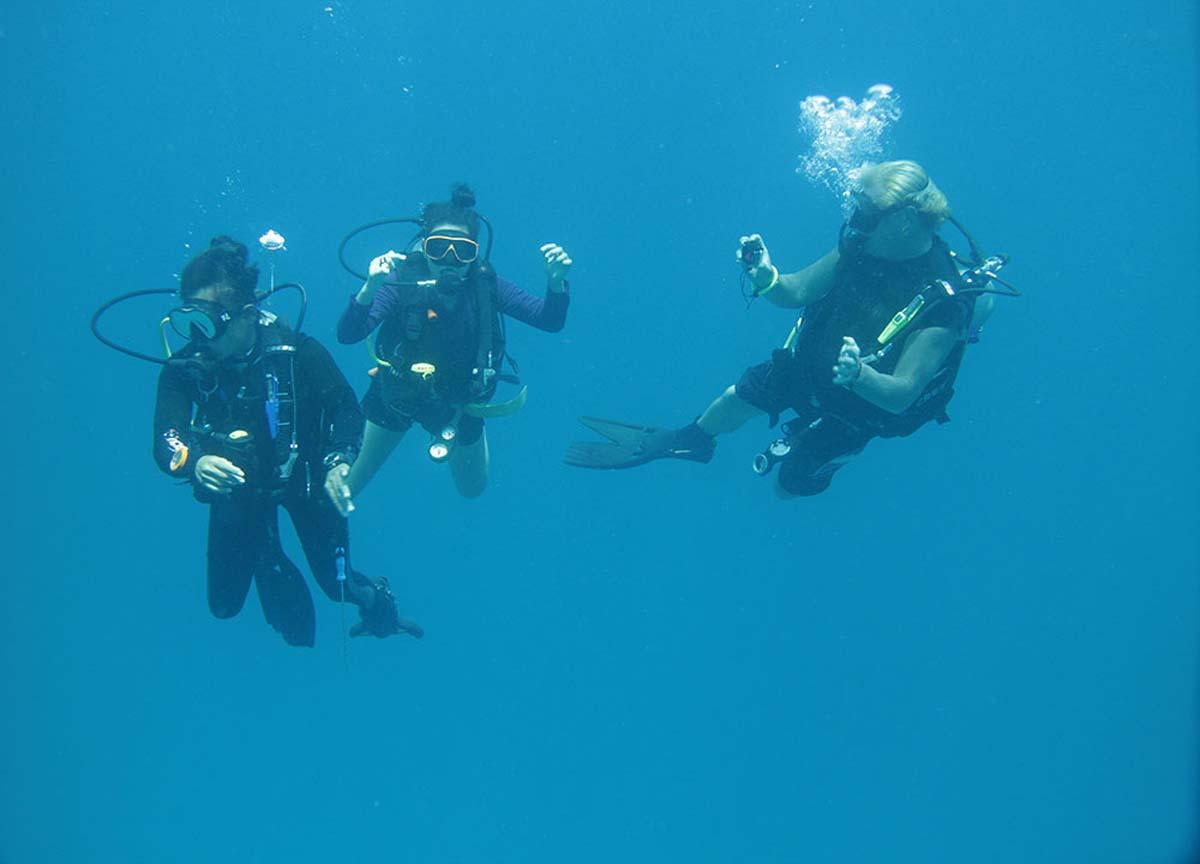 Youngsters can learning to scuba dive in Thailand photo credit to Alex
Youngsters can learning to scuba dive in Thailand photo credit to Alex
What do I learn during the course?
The course content varies a little bit between agencies* but in general the above is what you will learn
The Equipment
The tank is an aluminium or stainless steel cylinder that contains compressed air for you two breathe. Sometimes the air is richer in oxygen, and this is referred to as Nitrox.
Weights are required to help you sink down slowly to your required depth. They are necessary due to the rest of the equipment making you more buoyant than you would normally be.
The BCD jacket serves two purposes, which are to control your buoyancy up or down and to connect other items of the equipment set.
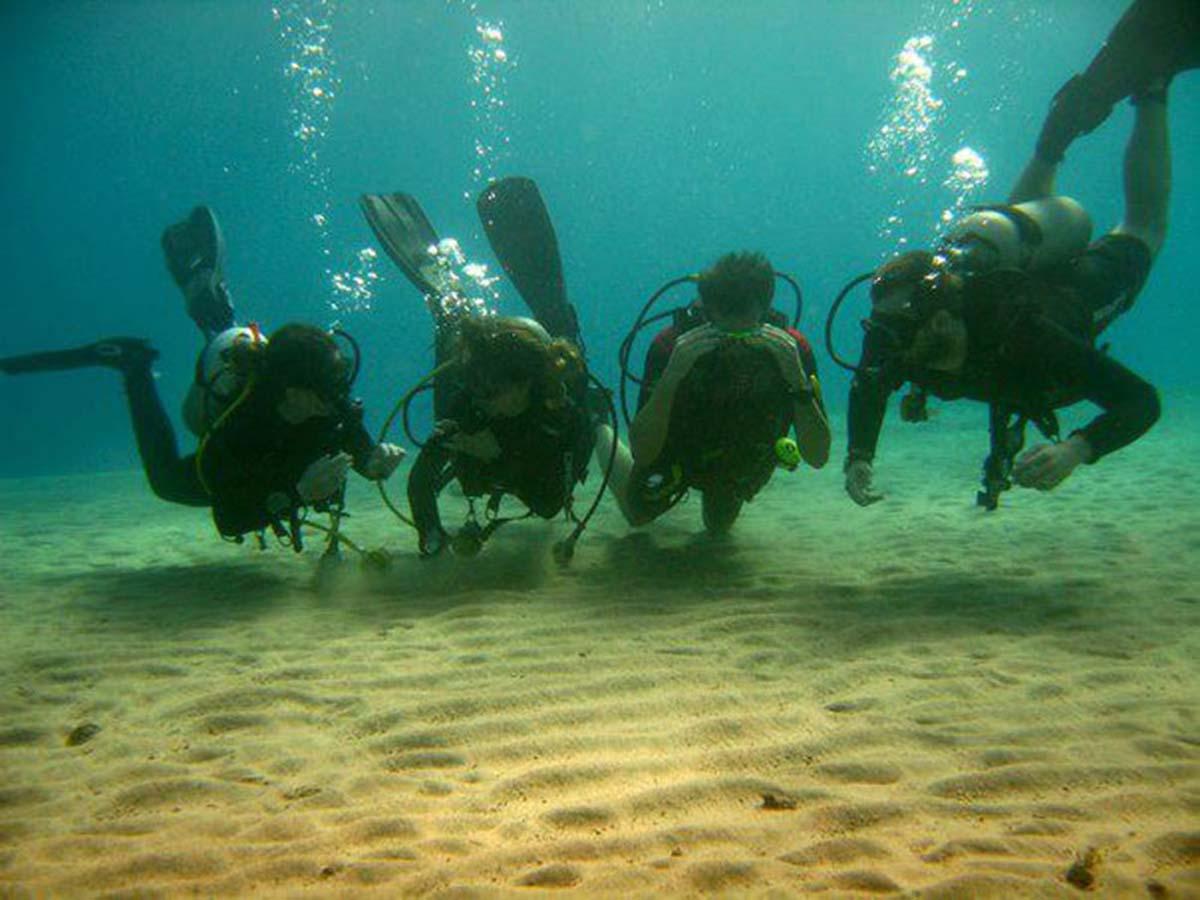 Controlling your buoyancy is an important skill when you learn to scuba dive in Thailand photo credit to Emmy Ahlen
Controlling your buoyancy is an important skill when you learn to scuba dive in Thailand photo credit to Emmy Ahlen
The hoses are referred to as ‘regs’ or regulator. These include gauges for checking your tank’s remaining air & your current depth. They also include a hose from the tank to the BCD and two hoses to mouthpieces. The second mouthpiece is only a spare in case your main one fails or you buddy diver needs to use air from your tank.
A wetsuit or drysuit is not vital for warm water, but they increase your comfort. Wetsuits keep you warm, but you do get wet. Drysuits keep you dry, and therefore warm. Drysuits are only required in cold water.
The mask is necessary for you to see properly underwater. Swimming goggles are not suitable, because you need to be able to ‘equalise’ the air space inside when water pressure increases at depth.
Fins are necessary for you to move around underwater. You don’t use your arms like when swimming at the surface. In fact, it’s easy to spot new divers by the way they wave their arms. Experienced divers keep their hands and arms still, and near to their body.
Basic science of safe diving
The basic science of scuba diving is not difficult to learn or to understand. During the Open Water course you will learn about what happens to air spaces and the human body when at depth. If done properly, scuba diving is a very safe activity, in fact it’s healthy. However, there are limitations and it’s vital to understand these limits and why.
Some safety skills under water
There are times when not everything goes to plan, and every scuba diver needs to be able to calmly perform a few simple actions, such as clearing a leaking mask and retrieving a mouthpiece hose. You also need to control your buoyancy so that you can maintain a steady depth and not be going up and down in the water.
What to do in certain situations
In the highly-unlikely event of a minor emergency situation underwater every diver needs to know what to do and how. This normally includes safely ending the dive either alone or with your buddy.
How many times do I dive before I get my licence?
Almost all Open Water scuba diving courses include 4 dives in the sea or a lake. These are in addition to the skills learned in the pool or in a calm bay. The pool sessions are referred to as ‘Confined Water Skills.’ When you learn to scuba dive in Thailand the pool and sea water is always warm and comfortable. This is an added bonus, and enable you to relax more and focus on the course, not on how cold you are.
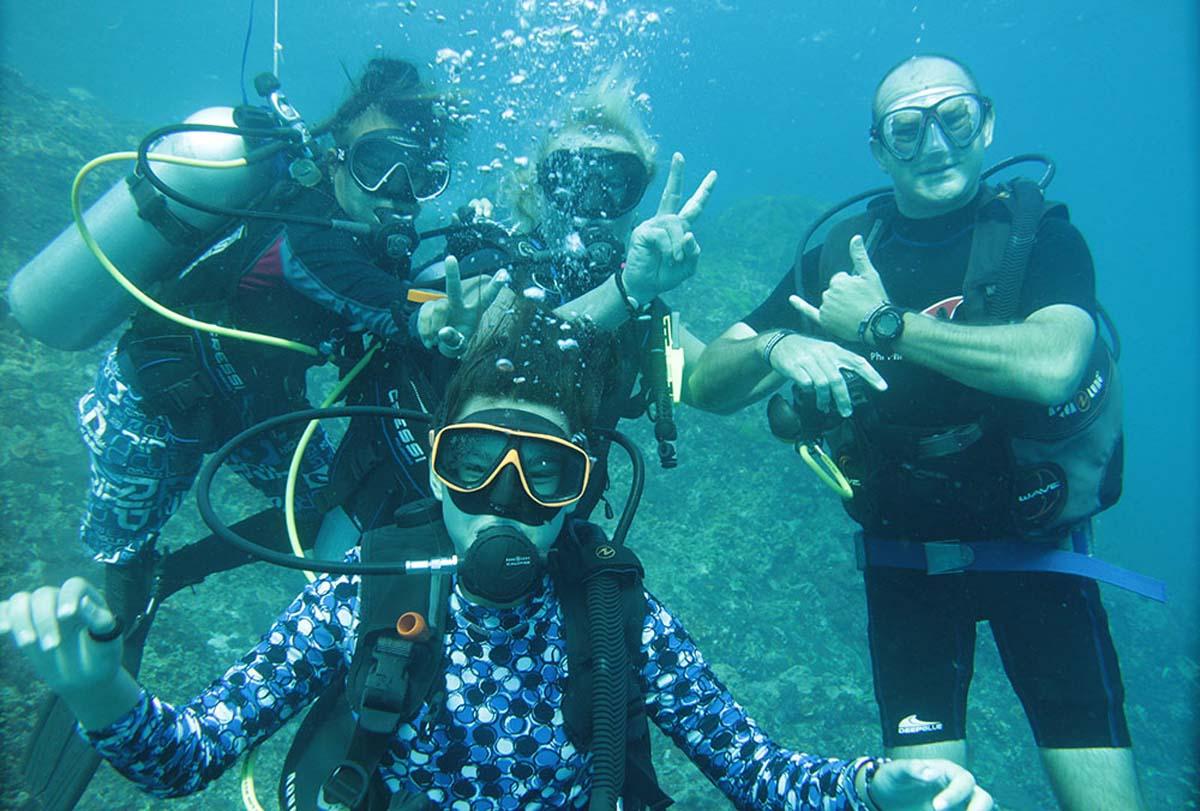 Family learn to scuba dive in Thailand photo credit to Alex
Family learn to scuba dive in Thailand photo credit to Alex
Do I have to perform skills on my Open Water dives in the sea or a lake?
Yes, but only to show your diving instructor that you are able to. You will have already shown him or her in the confined water sessions. The four Open Water dives are supposed to be relaxing fun, and a good instructor with good students will quickly complete a few skills and then enjoy the rest of the dives looking at the reef & fish.
If the student has been paying attention during the course, 90% of the Open Water dives will be the same as ‘fun dives’ in which divers follow a guide along the reef looking at the marine life.
*PADI is the best-known scuba diving agency in the world, but it is certainly not the only one. Others include CMAS, SSI, NAUI, BSAC, TDI, SDI, Raid, and many more.
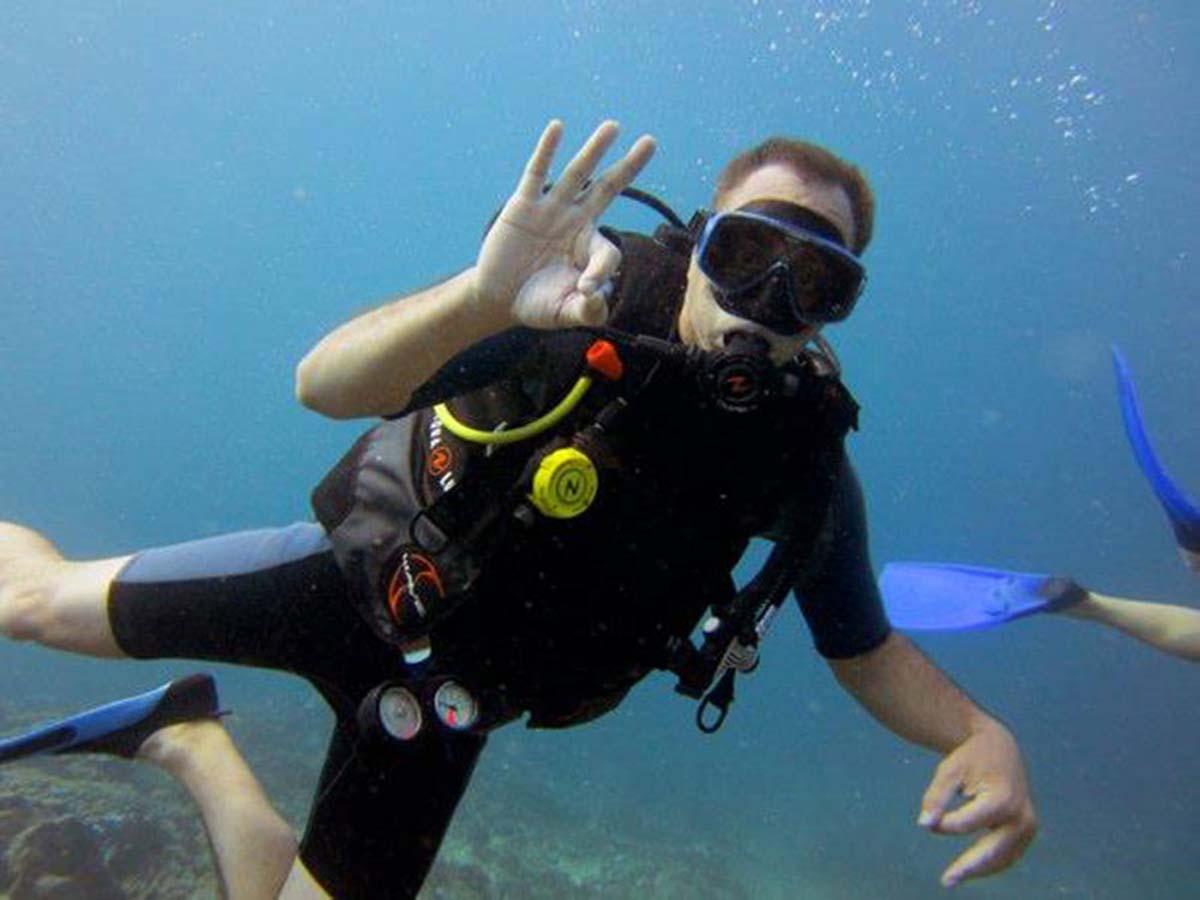 The OK sign you use when you learn to scuba dive in Thailand photo credit to Emmy Ahlen
The OK sign you use when you learn to scuba dive in Thailand photo credit to Emmy Ahlen
If I am PADI certified, can I dive with a dive centre or boat that isn’t PADI, and vice versa?
Absolutely, yes. Dive centres just want to see that you are a certified diver, and to which maximum depth. If you are certified through another agency, this is not a problem. In fact, you can do the Open Water course with one agency (for example PADI) and then the next level up (Advanced Diver) with another agency.
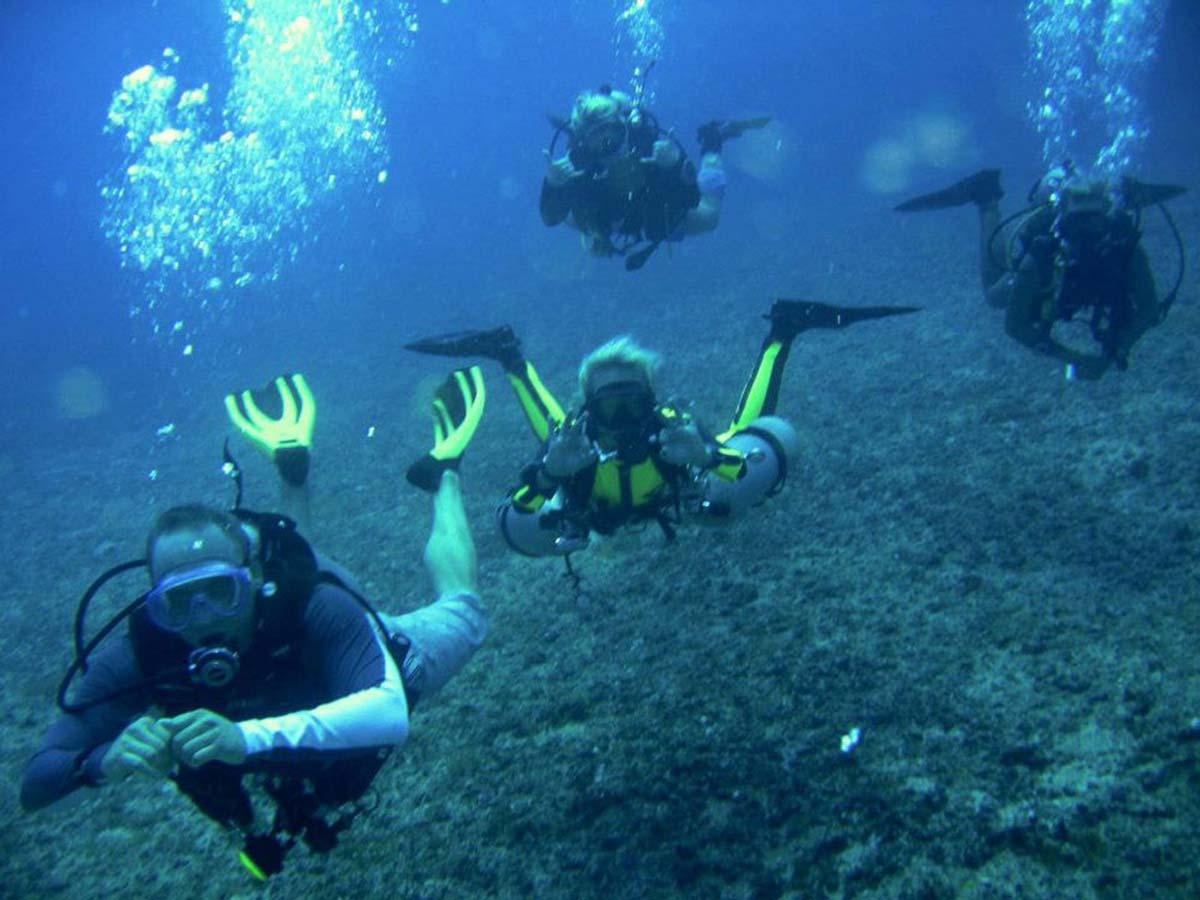 Group of friends learn to scuba dive in Thailand photo credit to Emmy Ahlen
Group of friends learn to scuba dive in Thailand photo credit to Emmy Ahlen
So What About Learning to Dive at Thailand’s Similan Islands
Learning to dive at The Similan Islands in Thailand is not common, easy or cheap, but it can be done. Most Similan Islands divers are already certified, and many have done their course before coming to Thailand. But some do the Open Water Course in Thailand, maybe at Koh Tao, Phuket or Phi Phi. However, a few divers want to learn to dive at the Similans. There are a few things to consider for anyone wanting to do this. These are the time and money spent, plus depth limitations, and staff availability.
The cost of learning to dive at the Similan Islands is difficult to explain simply. If you do the course based on land and the four Open Water dives over two day trips, the cost is in excess of $500 USD. But most people do it on a liveaboard cruise, where the cost is a lot less, but in addition to the cruise price. On average the price is $250-350 USD on top of a liveaboard cruise.
The logistics are that you normally need at least 2 full days in Khao Lak (not Phuket) to complete the confined skills and theory. If you do the theory online first, the time required in Khao Lak is reduced, but not by much.
Open Water divers are normally limited to a maximum depth of 18 metres. Some Similan boats require divers to be certified to 30 metres. It’s still possible to do the course on these boats, but further course dives are required to become certified deeper. Also, during the first day of the course you will be limited to 12 metres.
The diving instructor is only able to teach a limited number of Open Water students at the same time and is also limited in how many people he or she is responsible for. Not all boats have enough staff to spare an instructor for an Open Water course on a liveaboard cruise. Therefore, the course is not always available. This is especially true during peak season, such as New Year and Chinese New Year. If you are alone and want to learn to dive on a Similan liveaboard diving cruise you may need to pay an extra fee for a private instructor. And at the busiest weeks of the season, learning to dive is usually not possible.
In summary, we recommend most people take the Open Water course elsewhere before joining a Similan Islands liveaboard cruise. Not only will they enjoy the cruise more, it’s better value to learn to dive in Koh Tao. In addition, when learning to dive, you tend to focus more on your diving skills than the marine life. This can and should be done when the diving conditions are average or good. Then it’s better to enjoy ‘fun diving’ at The Similan Islands, where the conditions are excellent.


